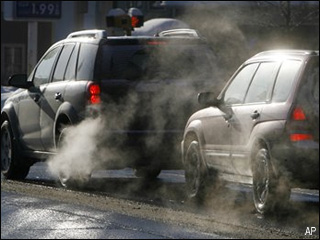
Yesterday, the US EPA finally issued administrative findings with respect to greenhouse gases (GHGs) such as carbon dioxide. While coinciding with the commencement of the climate conference in Copenhagen, this finding has been anticipated since the 2007 U.S. Supreme Court decision in Massachusetts v EPA – in which the U.S. Supreme Court ruled that the EPA did in fact have the authority to regulate GHGs under the U.S. Clean Air Act.
The Court’s decision in Massachusetts specifically found that the EPA had authority to regulate GHGs by issuing emission standards for motor vehicles, under Section 202(a)(1) of the Clean Air Act. Under that section:
(1) The Administrator shall by regulation prescribe (and from time to time revise) in accordance with the provisions of this section, standards applicable to the emission of any air pollutant from any class or classes of new motor vehicles or new motor vehicle engines, which in his judgment cause, or contribute to, air pollution which may reasonably be anticipated to endanger public health or welfare…
Yesterday’s finding specifically held two things:
(1) Endangerment Finding:
The Administrator finds that the current and projected concentrations of the six key well-mixed greenhouse gases–carbon dioxide (CO2), methane (CH4), nitrous oxide (N2O), hydrofluorocarbons (HFCs), perfluorocarbons (PFCs), and sulfur hexafluoride (SF6)–in the atmosphere threaten the public health and welfare of current and future generations.(2) Cause or Contribute Finding:
The Administrator finds that the combined emissions of these well-mixed greenhouse gases from new motor vehicles and new motor vehicle engines contribute to the greenhouse gas pollution which threatens public health and welfare.
The next step is to determine – based on these findings – exactly what emissions standards are going to be appropriate.
It’s also important to note what this finding is *not*. The Clean Air Act also empowers the EPA to publish air quality criteria for air pollutants it anticipates to endanger public health or welfare. For these criteria air pollutants, the EPA sets up nationally uniform ambient air quality standards for the country, which individual states are required to meet. But so far, the EPA has not imposed any stringent sort of caps on GHG emissions like these. Presumably, a legislative solution comprehensively addressing GHG emission at large is anticipated.
Nevertheless, other proposed rules coming down the administrative pike, might be seen to complement anticipated legislation. Title V of the Clean Air Act requires permits for all major industrial sources with state administration and federal oversight. If and when a comprehensive legislative solution to GHGs is enacted, rules currently proposed by the EPA would affect sources emitting over 25,000 tons of GHGs. Such sources would be required to use best-available-control-technology (BACT) to obtain GHG emission permits.
